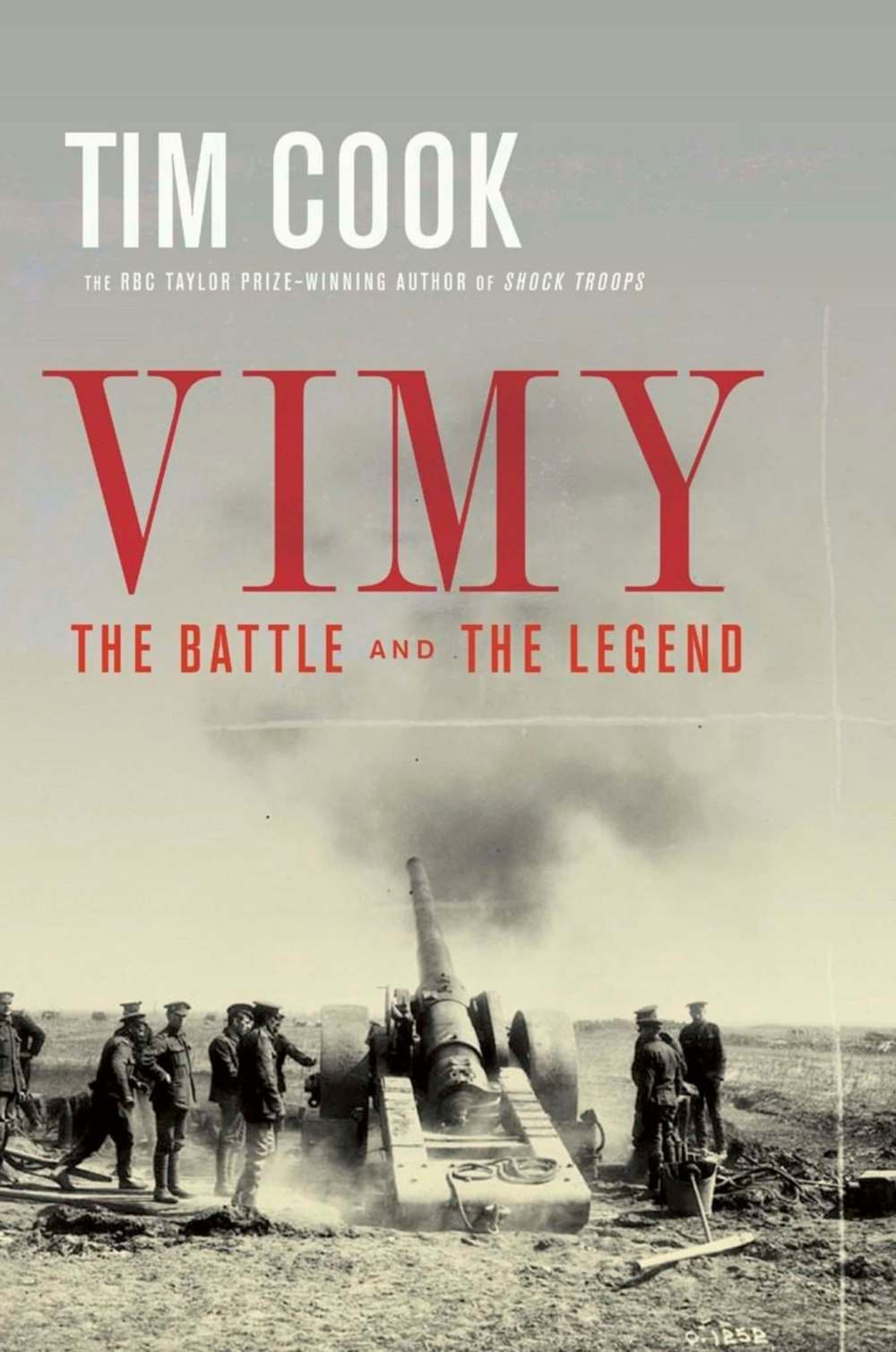Cook’s Vimy history a big, balanced beauty
Advertisement
Read this article for free:
or
Already have an account? Log in here »
To continue reading, please subscribe:
Monthly Digital Subscription
$0 for the first 4 weeks*
- Enjoy unlimited reading on winnipegfreepress.com
- Read the E-Edition, our digital replica newspaper
- Access News Break, our award-winning app
- Play interactive puzzles
*No charge for 4 weeks then price increases to the regular rate of $19.00 plus GST every four weeks. Offer available to new and qualified returning subscribers only. Cancel any time.
Monthly Digital Subscription
$4.75/week*
- Enjoy unlimited reading on winnipegfreepress.com
- Read the E-Edition, our digital replica newspaper
- Access News Break, our award-winning app
- Play interactive puzzles
*Billed as $19 plus GST every four weeks. Cancel any time.
To continue reading, please subscribe:
Add Free Press access to your Brandon Sun subscription for only an additional
$1 for the first 4 weeks*
*Your next subscription payment will increase by $1.00 and you will be charged $16.99 plus GST for four weeks. After four weeks, your payment will increase to $23.99 plus GST every four weeks.
Read unlimited articles for free today:
or
Already have an account? Log in here »
Hey there, time traveller!
This article was published 01/04/2017 (3170 days ago), so information in it may no longer be current.
Who will speak for the dead?
Military historian Tim Cook has written an admirable, balanced and very readable study that catches the elusive power this First World War battle and monument have had in our history.
Cook certainly has the credentials, as his previous books prove. If his position as military historian at the Canadian War Museum suggests bias or narrowness of viewpoint, his broad strokes and ability to move from documentation to anecdote, from battle description to opposing viewpoints, will satisfy most critical readers.

The big question: Do most Canadians care, or should they? It may take most of the book to answer yes, but the journey is indeed worth it.
Cook ranges from a detailed description of the battle and its aftermath — a full 164 pages — to a careful delineation of the rise and fall and rise again of our alternating attention and dismissal of Vimy.
Of course those who served needed to believe in its value, and those many relatives whose young men had no known grave needed a physical reminder. The pilgrimage, as it was described in 1936 for the unveiling, drew a large contingent from across Canada; considering the war that was only three years away, its suggestion of a grieving Canada carried great weight.
Cook’s historical account includes the pacifism of the 1930s and dismissal that the “war to end all wars” had any value at all. Included is the divisiveness conscription had brought, with particular attention to Quebec’s anger.
Balanced against this is the description of the power of Canadian soldiers fighting together as a Canadian unit for the first time, with attention to the value of Gen. Arthur Currie’s contributions to new warfare tactics that saved lives and increased the likelihood of a victory.
Not ignored are the later attacks on Currie over losses, especially during the last 100 days of the war.
Examples of how Canadians’ views have varied include the early writings on the battle — described by Cook as “travel narratives of mass murder” — to the distinguished editor of the Winnipeg Free Press, John W. Dafoe who, after visiting the site as a reporter, wrote in 1919 that Vimy was not, “in its actual achievement nor in its military consequences the greatest feat of the Canadian Expeditionary Force,” but the battle “holds, and may continue to hold, a unique place in the Canadian consciousness.”
Of unusual interest is the description of the creation of the monument, its sculptor Walter Allward, his search for the right stone, and his changing views of what the monument was to suggest to Canadians. Expected deadlines passed and governments changed; eventually, then-prime minister Mackenzie King took more than his share of credit for the monument and Allward was ignored at the unveiling.
Seeing Allward’s smaller models for the monument at the Canadian War Museum is striking, but the maquettes can’t match the power and emotion that the full monument — visible at a distance and dominating France’s Vimy Ridge — draws from the viewer, with the names carved into the base of the stone.
April 9 marks the 100-year anniversary of the battle. As author Cook says, “Vimy did not make the nation. It was the nation that made Vimy.”
Ron Robinson is a Winnipeg broadcaster on CKUW 95.9 FM.


